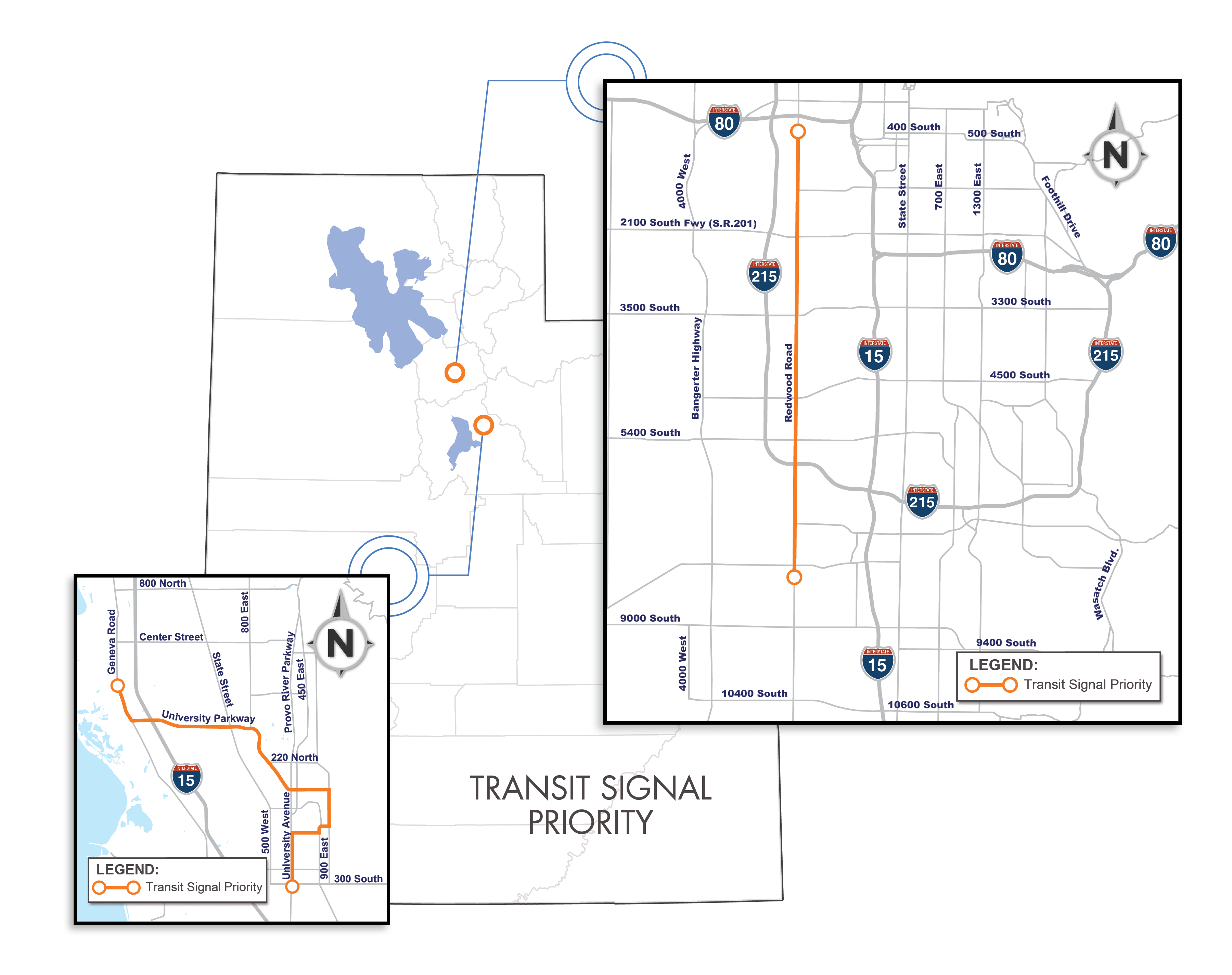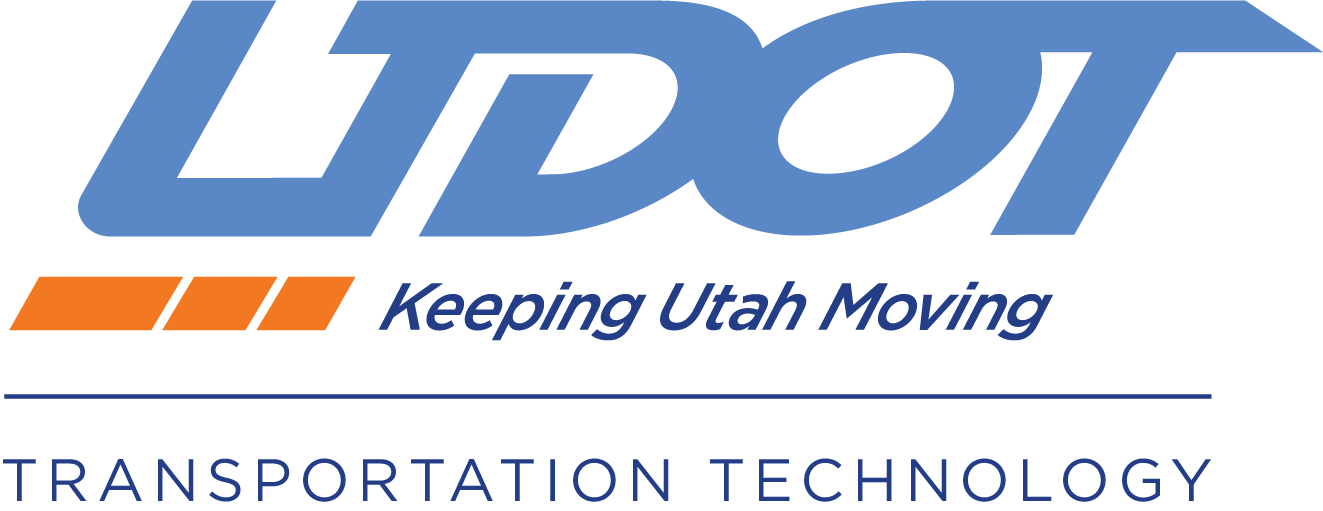Utah Smart Transit
Signal Priority
To help improve the reliability of bus schedules, Utah Transit Authority (UTA) transit buses are connected to traffic signals through dedicated short-range communication (DSRC) radios along selected corridors. A bus that is behind its published schedule by a certain threshold can be granted additional green light time at these connected traffic signals.
OVERVIEW
UDOT is one of the first agencies in the country to use wireless technology to allow vehicles to share information and data with road-side infrastructure, like traffic signals. This two-way communication system is called vehicle-to-infrastructure (V2I) technology. UDOT has designed a Utah Transit Signal Priority (TSP) system that utilizes V2I technology to facilitate communication between the Utah Transit Authority (UTA) buses and equipped traffic signals.
The Transit Signal Priority technology is used to keep UTA buses on schedule. When a UTA bus approaches an equipped traffic signal, it uses Dedicated Short-Range Communication (DSRC) wireless communication channels to send and receive messages between the bus and the traffic signal. If a bus is behind schedule, this technology allows the bus to request additional green time from an equipped traffic signal. The traffic signal evaluates the request based on certain requirements. For example, a bus must be behind schedule by a given threshold of time. If the criteria are met, the traffic signal will stay green a few extra seconds to allow the bus to get through the light and get back on schedule.
Quick Facts
For this Transit Signal Priority system to work, both the bus and the traffic signal must have the DSRC equipment and specialized software installed. The TSP application software that is used is known as the Utah Multi-Modal Intelligent Traffic Signal System (MMITSS), a Utah-specific version of software developed by the University of Arizona.
An analysis of the TSP technology has revealed that the buses only request signal priority, or extra green time, about 14% to 24% of the time, depending on travel direction. Further, they are granted priority for only one-third of those requests. Extra green time is not granted when the bus can cross the intersection during the normal green time or when conditions preclude the signal from granting extra time. Despite this, studies indicate that the buses arrive at their stops more reliably than when this system isn’t used. This analysis also reveals that impacts to cross-traffic are quite minimal.
BENEFITS OF TECHNOLOGY
There are many direct benefits of the TSP system. First, the technology allows buses to be on time more often. Second, TSP systems enhance transit reliability so that riders can depend on the bus schedule, which should encourage more ridership. Third, the technology can lead to possible fuel saving because TSP systems reduce bus delays at traffic signals, thus enhancing gas mileage.
WHERE THE TECHNOLOGY IS DEPLOYED
TSP technology is currently deployed at two locations in Utah: Redwood Road in Salt Lake County and the Provo-Orem Utah Valley Express (UVX) bus route in Utah County. UDOT plans to add TSP technology on Foothill Drive and State Street in Salt Lake County and State Street in Utah County. The Redwood Road corridor was the first operational use of DSRC/MMITSS connected vehicle (CV) technology in the United States. Other transportation agencies in the country are implementing the technology, but only on a testing and evaluation basis.
Redwood Road is a north-south arterial in Salt Lake County. The TSP segment stretches 11 miles of the road from 400 South to 8020 South and has 30 signalized intersections. It has been operational since November 2017. Operational results from the corridor have shown a transit schedule reliability improvement from 88% to 94% in the southbound PM peak travel time. The technology has achieved similar results for northbound peak travel time.
The second TSP application in Utah is the Provo-Orem UVX bus route in Utah County. The UVX route runs from southwest Orem to south central Provo and accesses Utah Valley University and Brigham Young University. This 10.5-mile corridor has 47 signalized intersections and 25 connected buses. An operation study is currently underway to determine transit schedule reliability benefits on this corridor.

